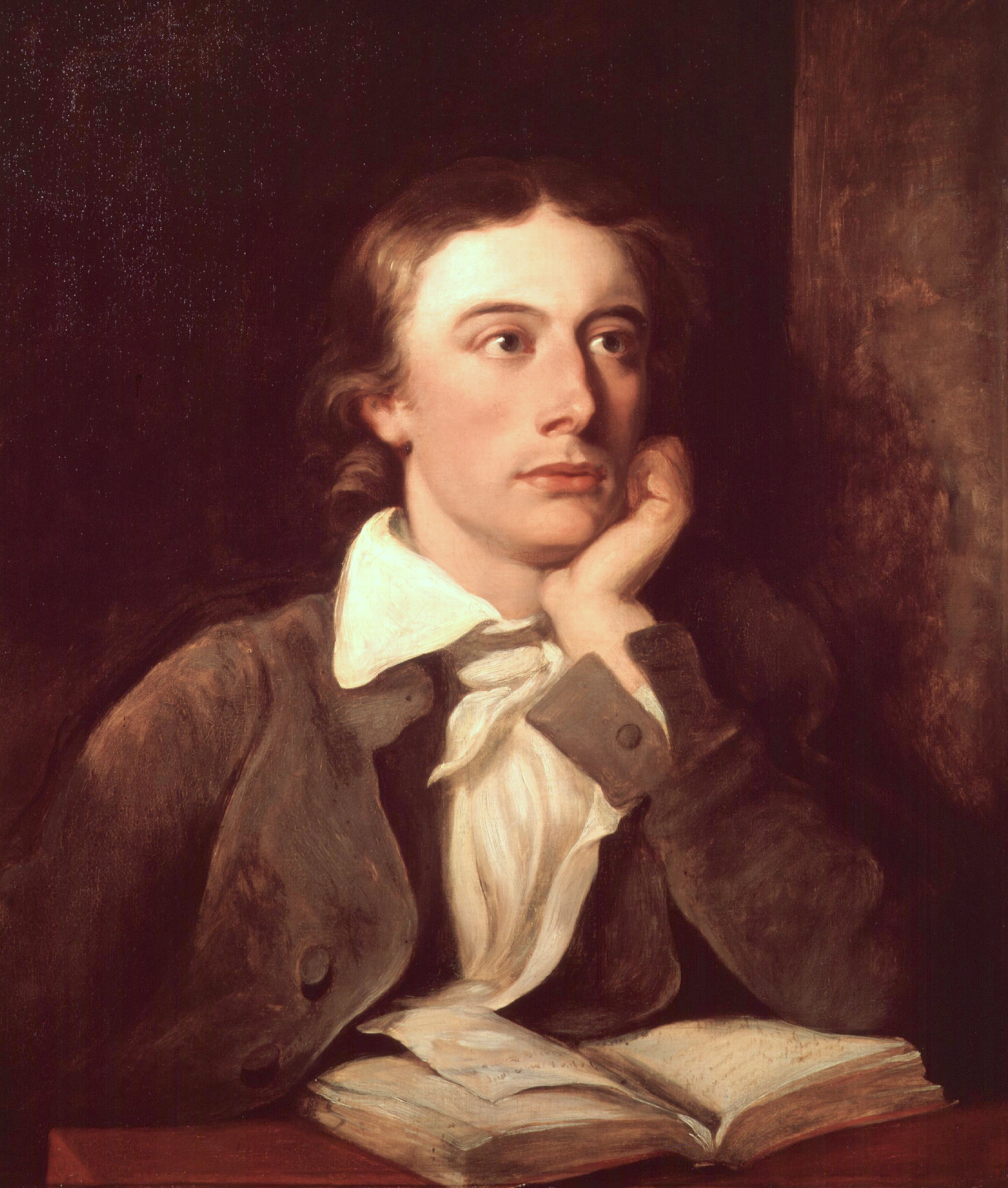da Lettera a Benjamin Bailey, 22 novembre 1817
John Keats frasi celebri
da Lettera a John Taylor, 27 febbraio 1818
da Lettera a George e Georgiana Keats, 18 febbraio 1819
da Lettera a John Hamilton Reynolds, 11 luglio 1819
Frasi sulla bellezza di John Keats
“Una bella cosa è una gioia per sempre: | La sua bellezza aumenta e mai | Sparirà nel nulla.”
cap. I, vv. 906-7
Endymione
da Lettera a James Augustus Hessey, 8 ottobre 1818
da Lettera a John Hamilton Reynolds, 3 febbraio 1818
da Lettera a John Hamilton Reynolds, 9 aprile 1818
Frasi sulla vita di John Keats
da Lettera a Benjamin Robert Haydon, 10-11 maggio 1817
da Lettera a James Rice, 14-16 febbraio 1820
da Lettera a George e Georgiana Keats, 18 febbraio 1819
da Lettera a George e Georgiana Keats, 18 febbraio 1819
da Lettera a Charles Brown, 30 novembre 1820
John Keats Frasi e Citazioni
da Lettera a John Hamilton Reynolds, 25 agosto 1819
da Lettera a Charles Brown, 30 novembre 1820
da Lettera a Benjamin Bailey, 23 gennaio 1818
da Lettera a Benjamin Robert Haydon, 22 dicembre 1818
da Lettera a John Taylor, 23 agosto 1819
da Lettera a Charles Brown, 23 settembre 1819
da Lettera a James Augustus Hessey, 8 ottobre 1818
da Lettera a Richard Woodhouse, 27 ottobre 1818
da Lettera a George e Georgiana Keats, 18 febbraio 1819
da Lettera a Benjamin Bailey, 13 agosto 1819
da Lettera a Fanny Brawne, febbraio 1820
da Lettera a Charles Brown, 28 settembre 1820
da Lettera a Fanny Brawne, 13 ottobre 1819
“La mia immaginazione è un monastero e io sono un monaco.”
da Lettera a Percy Bysshe Shelley, 16 agosto 1820
John Keats: Frasi in inglese
“And lucent syrops, tinct with cinnamon.”
Stanza 30
Poems (1820), The Eve of St. Agnes
“Tis the pest
Of love, that fairest joys give most unrest.”
Bk. II, l. 365
Endymion (1818)
“Forlorn! the very word is like a bell
To toil me back from thee to my sole self!”
Stanza 8
Poems (1820), Ode to a Nightingale
“They will explain themselves — as all poems should do without any comment.”
Letter to George Keats (1818)
Letters (1817–1820)
“Love in a hut, with water and a crust,
Is — Love, forgive us! — cinders, ashes, dust.”
"Lamia", Pt. II, l. 1
Poems (1820)
“He ne'er is crown'd
With immortality, who fears to follow
Where airy voices lead.”
Bk. II, l. 211
Endymion (1818)
“And for her eyes: what could such eyes do there
But weep, and weep, that they were born so fair?”
"Lamia", Pt. I, l. 61
Poems (1820)
Bk. I, l. 72
Hyperion: A Fragment (1819)
Letter to George and Thomas Keats (December 22, 1817)
Letters (1817–1820)
“The silver snarling trumpets 'gan to chide.”
Stanza 4
Poems (1820), The Eve of St. Agnes
“Works of genius are the first things in this world.”
Letter to G. and F. Keats (January 13, 1818)
Letters (1817–1820)
“Call the world if you please "The vale of soul-making."”
Letter to George and Georgiana Keats (April 21, 1819)
Letters (1817–1820)
"Lines on the Mermaid Tavern", l. 1–4
Poems (1820)
“The music, yearning like a God in pain.”
Stanza 7
Poems (1820), The Eve of St. Agnes
Letter to Richard Woodhouse (October 27, 1818)
Letters (1817–1820)
“I think I shall be among the English Poets after my death.”
Letter to George and Georgiana Keats (October 14, 1818)
Letters (1817–1820)
Letter to James Hessey (October 9, 1818)
Letters (1817–1820)
I stood tip-toe upon a little Hill; reported in Bartlett's Familiar Quotations, 10th ed. (1919)
